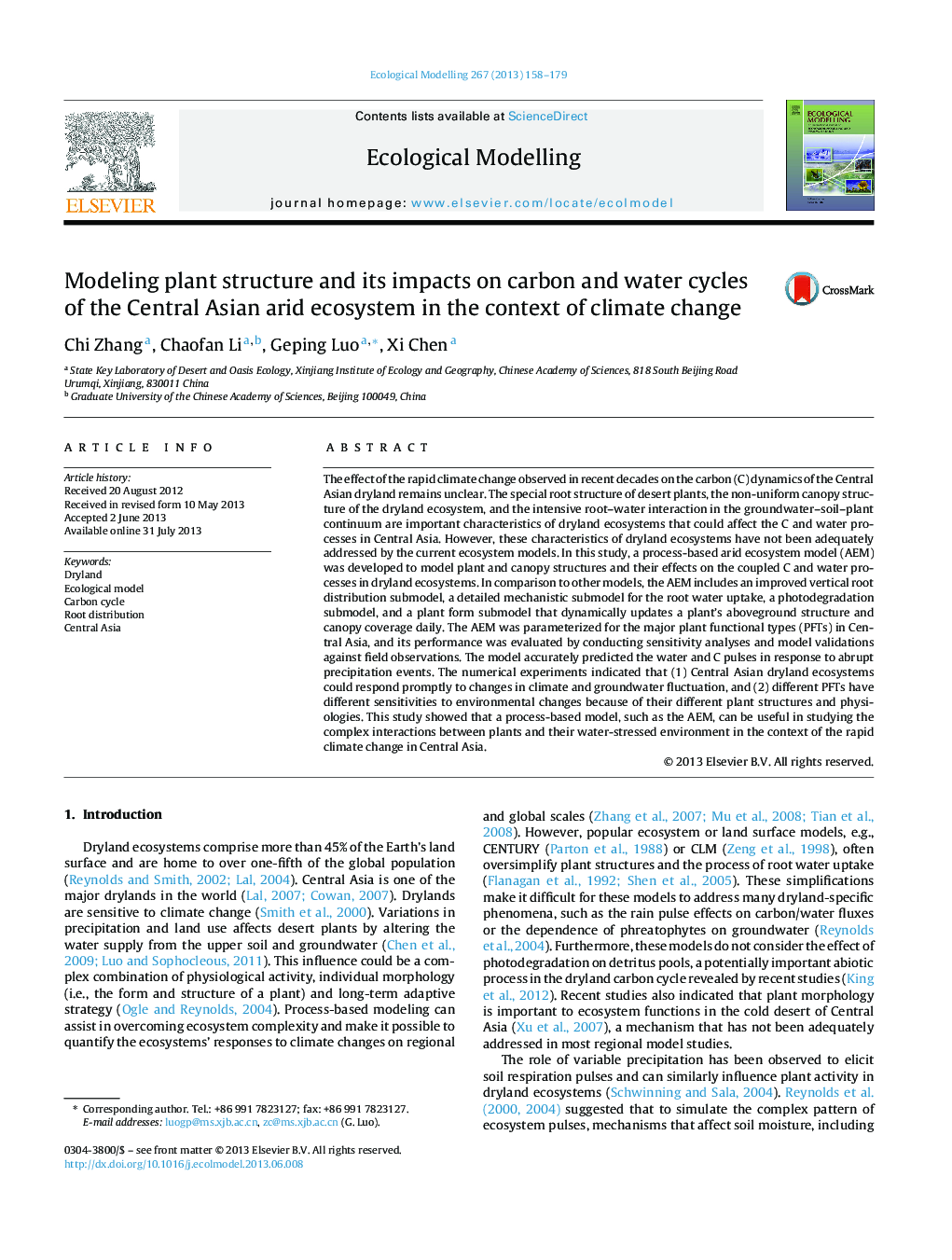| کد مقاله | کد نشریه | سال انتشار | مقاله انگلیسی | نسخه تمام متن |
|---|---|---|---|---|
| 4376065 | 1617479 | 2013 | 22 صفحه PDF | دانلود رایگان |
عنوان انگلیسی مقاله ISI
Modeling plant structure and its impacts on carbon and water cycles of the Central Asian arid ecosystem in the context of climate change
دانلود مقاله + سفارش ترجمه
دانلود مقاله ISI انگلیسی
رایگان برای ایرانیان
کلمات کلیدی
موضوعات مرتبط
علوم زیستی و بیوفناوری
علوم کشاورزی و بیولوژیک
بوم شناسی، تکامل، رفتار و سامانه شناسی
پیش نمایش صفحه اول مقاله

چکیده انگلیسی
The effect of the rapid climate change observed in recent decades on the carbon (C) dynamics of the Central Asian dryland remains unclear. The special root structure of desert plants, the non-uniform canopy structure of the dryland ecosystem, and the intensive root-water interaction in the groundwater-soil-plant continuum are important characteristics of dryland ecosystems that could affect the C and water processes in Central Asia. However, these characteristics of dryland ecosystems have not been adequately addressed by the current ecosystem models. In this study, a process-based arid ecosystem model (AEM) was developed to model plant and canopy structures and their effects on the coupled C and water processes in dryland ecosystems. In comparison to other models, the AEM includes an improved vertical root distribution submodel, a detailed mechanistic submodel for the root water uptake, a photodegradation submodel, and a plant form submodel that dynamically updates a plant's aboveground structure and canopy coverage daily. The AEM was parameterized for the major plant functional types (PFTs) in Central Asia, and its performance was evaluated by conducting sensitivity analyses and model validations against field observations. The model accurately predicted the water and C pulses in response to abrupt precipitation events. The numerical experiments indicated that (1) Central Asian dryland ecosystems could respond promptly to changes in climate and groundwater fluctuation, and (2) different PFTs have different sensitivities to environmental changes because of their different plant structures and physiologies. This study showed that a process-based model, such as the AEM, can be useful in studying the complex interactions between plants and their water-stressed environment in the context of the rapid climate change in Central Asia.
ناشر
Database: Elsevier - ScienceDirect (ساینس دایرکت)
Journal: Ecological Modelling - Volume 267, 10 October 2013, Pages 158-179
Journal: Ecological Modelling - Volume 267, 10 October 2013, Pages 158-179
نویسندگان
Chi Zhang, Chaofan Li, Geping Luo, Xi Chen,